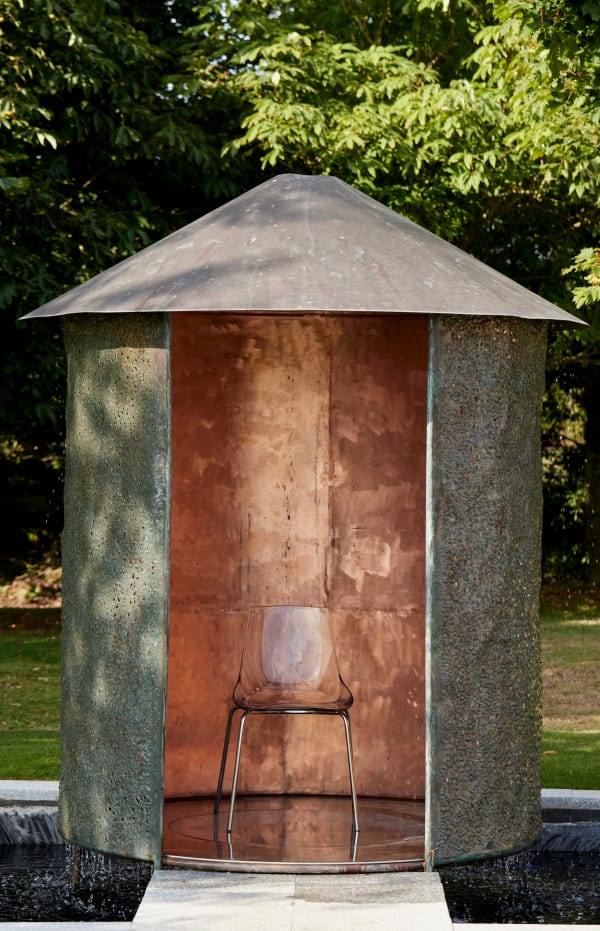Giles Rayner
Giles Rayner has been creating water sculptures and structures for over twenty years. He received a degree in Fine Art and Sculpture at the University of Kingston and while he was still studying for his degree (which he completed in 2002), he had his first piece exhibited at the Chelsea Flower Show in 2000. Since then his work has been annually displayed at the Flower Show and included in award winning gardens for renowned garden designers such as Penelope Hobhouse and Xa Tollemache. Penelope Hobhouse has one of his pieces in her own garden.
Rayner’s designs have been installed throughout the world. In Britain his work enhances the grounds of country houses such as the Savil Garden in Windsor Great Park; East Ruston Old Vicarage; the Rose Garden at Elton Hall, Cambridgeshire; Castle Hill, Devon; Canonteign, Devon; Kirtling Hall, Cambridgeshire; Corsock House, Castle Douglas, Dumfries; and Burton Agnes Hall, Yorkshire. Overseas perhaps Rayner’s most famous (and largest) project was Arches, a monumental water sculpture that he created for the gardens of the Royal Opera House in Muscat, Oman; other work may be seen at the Wesleyan University in Illinois, Long Island, Thailand, Sri Lanka and Sweden.
Rayner’s work is innovative and experimental. He combines time-honoured skills with modern and cutting-edge creativity and interpretation. Whether he gets his inspiration from the natural world (in geometric designs or creations incorporating the fibonacci sequence) or historical or architectural influences, (and often a symbiosis of all three), his work can complement an historic, traditional landscape, a rural or urban haven or a contemporary, state-of-the-art environment. Rayner’s strong passion for the outdoors and deep perception of the external landscape is fundamental to his design philosophy and his aim is always to create original, timeless art that enhances the space in which it sits.
Rayner innately understands the materials with which he works, both metal and the (sometimes unexpected and often mesmerising) flow and fall of water. He works in copper, stainless steel and bronze and both manipulates and works with the energy of water and the beautiful aesthetic of still water and water in motion. Water is a fundamental element in the landscape and is seen in many cultures (and for many centuries) as an essential aspect and integral part of the landscape and garden, serving sensory functions and invoking sensuous response. In Rayner’s hands, the two elements of metal and water create a vital synergy and the atmosphere and visual effects created by his works of art change depending on the light, season, time of day or night or angle viewed from. They can be bewitching and intriguing at night, taking on their own mysterious sensitivity; playful during the day; the water can freeze and create a magical, natural sculpture alongside its metal counterpart; a spray of water can create a halo effect in a hazy light and the reflection of the structure in the water adds another dimension of creativity and visual response. Rayner’s work can be both exciting and dramatic and peaceful, subtle, and elusively mysterious.

